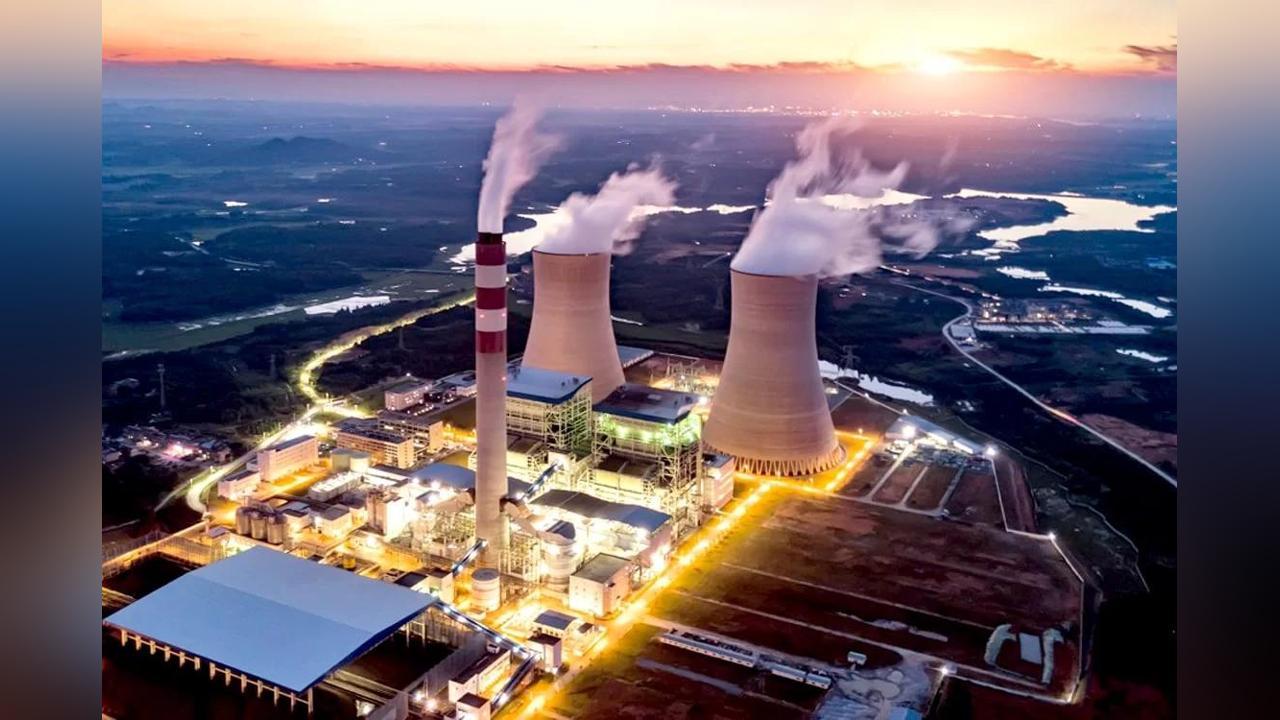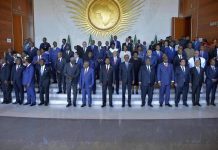Africa-Press – Eswatini. ESWATINI Electricity Company’s over E30 million agreement with Kenya Electricity Generating Company (KenGen) to conduct geoscientific studies across three regions of the Kingdom is moving full steam ahead with updates expected shortly.
During KenGen’s 72nd Annual General Meeting, Managing Director and CEO, Peter Njenga said this milestone underscores KenGen’s continued commitment to advancing renewable energy across Africa.
The contract, awarded earlier this year, tasks KenGen with conducting comprehensive geoscientific studies to assess geothermal potential in three prospective regions of Eswatini.
The studies, aimed at establishing the feasibility of developing a geothermal power plant, are now well underway, with completion expected in the next few months.
In September, the EEC launched phase two of the geothermal steam project, which seeks to explore the potential for generating clean, renewable energy using geothermal steam.
The move is aimed at marking a pivotal step towards energy security.
Commenting on the progress, Njenga reaffirmed the company’s dedication to advancing renewable energy solutions across Africa.
“Our strategic focus is on expanding our footprint beyond Kenya and leveraging our geothermal expertise to foster sustainable development across the continent,” said Njenga, adding,
“This partnership with Eswatini marks another significant step in our mission to support Africa’s renewable energy ambitions and mitigate the effects of climate change.”
Eswatini, a landlocked Kingdom in Southern Africa bordered by South Africa and Mozambique, has set its sights on harnessing geothermal energy to strengthen its renewable energy capacity and enhance energy security.
This aligns with the country’s broader commitment to sustainable development and global efforts to combat climate change by reducing carbon emissions.
“I am optimistic that our geoscientific studies will confirm the viability of Eswatini’s geothermal resources, enabling the country to increase its renewable energy portfolio and enhance its baseload capacity.
This project also reinforces KenGen’s strategy to diversify revenue streams and ensure financial sustainability through geothermal consultancy and related services,” said Njenga.
Speaking during the AGM, KenGen Board Chairman, Frank Konuche described the new partnership as a strategic move by Eswatini to tap into its natural resources while contributing to Africa’s sustainable energy goals.
“For KenGen, the project is a testament to our growing influence in geothermal development across the continent,” said Konuche.
The project will focus on three areas, Mvutshini in the Lobamba area, Mkhoba near Pigg’s Peak and the Lubombo Plateau at Magadzavane. Eswatini has numerous thermal springs located in:
Mkoba (3)
Mvuthsini (1)
Ezulwinin (3)
Lobamba (3)
Mawelawela (1)
Ngwempisi (1)
Mpopoma (2)
Mbondela (2)
Madubula (2)
Fairview (1)
Siphofaneni (2)
The springs are said to occur at or near valley bottoms and emanate from pre-Cambrian crystalline rock. The information on the country’s thermal springs is contained in an assessment that was carried out by N.S Robins, M.SC., and A.H Bath, M.A., D. Phil in 1979.
Speaking at the project’s launch in September, EEC Managing Director Ernest Mkhonta expressed his enthusiasm about the collaboration, emphasising that the project represents a critical step in Eswatini’s pursuit of renewable energy sources.
He said the partnership with KenGen would bring invaluable experience and expertise to Eswatini’s geothermal exploration.
EEC E34 million thermal energy deal moving full steam ahead.From_Left_to_Right_KenGen_Managing_Director_and_CEO_Eng._Peter_NjengaGeneral_Manager_Finance_Mary_Maalu_and_KenGen_Board_
“This initiative seeks to unlock a powerful and sustainable energy source: geothermal steam. Our aim is to generate base load power using renewable energy, ensuring a cleaner and more reliable electricity supply for the nation. This project aligns with EEC’s commitment to sustainability and energy security,” said Mkhonta.
KenGen said its experience and expertise in geothermal drilling, honed at Kenya’s Olkaria geothermal fields and in successful projects in Ethiopia, Djibouti, and Tanzania, played a strategic role in securing the Eswatini contract.
The Eswatini project is one of KenGen’s latest geothermal development contracts in Africa, following successful ventures in Djibouti, Ethiopia, and Tanzania. Kenya remains the continent’s leading geothermal energy producer and ranks among the top 10 globally, with an installed geothermal capacity of 754MW.
Geothermal energy is heat energy that comes from the Earth’s crust and is a renewable energy source. It’s a combination of energy from the formation of the planet and radioactive decay.
Geothermal energy is used for heating buildings, bathing, and generating electricity. It is extracted from the ground through wells which are drilled into underground reservoirs to access the hot water and steam.
It is said to be a reliable, low-carbon, and renewable source of heat that’s not dependent on weather conditions. However, it has high upfront costs, is location-specific, and can cause earthquakes in extreme cases.
The most common type of geothermal electricity station today is the binary cycle power station. In this type of station, moderately hot geothermal water is passed by a secondary fluid with a lower boiling point, causing the secondary fluid to flash vaporize and drive the turbines.
According to Britannica, the total amount of geothermal energy incident on Earth is vastly more than the world’s current energy requirements, but it can be difficult to harness for electricity production.
Despite its challenges, geothermal energy stands in stark contrast to the combustion of greenhouse gas-emitting fossil fuels (namely coal, petroleum, and natural gas) driving much of the climate crisis, and it has become increasingly attractive as a renewable energy source.
Mechanism and potential
Temperatures increase below Earth’s surface at a rate of about 30 °C per km in the first 10 km below the surface.
This internal heat of Earth is an immense store of energy and can manifest aboveground in phenomena such as volcanoes, lava flows, geysers, fumaroles, hot springs, and mud pots.
The heat is produced mainly by the radioactive decay of potassium, thorium, and uranium in Earth’s crust and mantle and also by friction generated along the margins of continental plates.
Worldwide, the annual low-grade heat flow to the surface of the Earth averages between 50 and 70 milliwatts (mW) per square meter.
EEC E34 million thermal energy deal moving full steam ahead
In contrast, incoming solar radiation striking Earth’s surface provides 342 watts per square meter annually.
In the upper 10 km of rock beneath the contiguous United States alone, geothermal energy amounts to 3.3 × 1025joules, or about 6,000 times the energy contained in the world’s oil reserves.
The estimated energy that can be recovered and utilized on the surface is 4.5 × 106exajoules, or about 1.4 × 106 terawatt-years, which equates to roughly three times the world’s annual consumption of all types of energy.
Although geothermal energy is plentiful, geothermal power is not. The amount of usable energy from geothermal sources varies with depth and by extraction method.
Normally, heat extraction requires a fluid (or steam) to bring the energy to the surface. Locating and developing geothermal resources can be challenging.
This is especially true for the high-temperature resources needed for generating electricity. Such resources are typically limited to parts of the world characterized by recent volcanic activity or located along plate boundaries or within crustal hot spots.
Geothermal reservoirs associated with those regions must have a heat source, adequate water recharge, adequate permeability or faults that allow fluids to rise close to the surface, and an impermeable caprock to prevent the escape of the heat.
Countries using geothermal electricity
Many countries around the world use geothermal energy, including:
United States
The world’s leading geothermal country, with 3,900 MW of installed power. The Geysers Geothermal Complex in California is the world’s largest geothermal plant.
Indonesia
The second-leading geothermal country, with 2,418 MW of installed power. Indonesia has the world’s largest estimated potential for geothermal energy resources.
Philippines
The third-leading geothermal country, with 1,952 MW of installed power.
Turkey
The fourth-leading geothermal country, with 1,691 MW of installed power.
New Zealand
The fifth-leading geothermal country, with 1,042 MW of installed power.
Kenya
The sixth-leading geothermal country, with 985 MW of installed power.
Mexico
The seventh-leading geothermal country, with 976 MW of installed power.
Italy
The eighth-leading geothermal country, with 916 MW of installed power.
Iceland
The ninth-leading geothermal country, with 754 MW of installed power.
Japan
The tenth-leading geothermal country, with 576 MW of installed power.
Researchers have noted that growth continues in geothermal development, yet at a still slow pace with promising development on the horizon and large numbers to come.
The total installed geothermal power generation capacity at year-end 2023 stood at 16,335 MW, an increase of 208 MW.
SIDEBAR:
ACCORDING to the Global Geothermal Market and Technology Assessment report by the International Renewable Energy Agency (IRENA), electricity generation from geothermal energy has increased at a rate of 3.5% annually.
The technical potential of hydrothermal and geothermal resources is estimated at 200 GWe and 5,000 GWth, respectively. According to the IPCC, geothermal energy can supply nearly 18% of the global electricity demand and cater to the electricity needs of 17% of the world’s population.
The environmental impacts of geothermal energy generation are considered benign. The life-cycle emissions of geothermal power plants with 100% reinjections are estimated at 11.3 grams of CO2 per kilowatt hour.
Its water consumption and land requirement are estimated at 0.66 litres/kWh and 7.5 square kilometres/terawatt hour, respectively. Geothermal plants are capable of providing stable and reliable electricity by utilizing proper reservoir management, with a capacity factor of over 80%.
In 2021, geothermal energy produced electricity at a Levelized Cost of Electricity (LCOE) of $0.068/KWh for newly commissioned plants.
Despite these benefits, it faces many challenges such as high upfront costs, technical hurdles, and long development timelines.
However, these challenges present a variety of opportunities for major market players to improve technology and provide cost-effective techniques and methods, with the help of supportive policies.
Many countries are realizing the promising benefits of geothermal energy by setting ambitious development targets. The United States pledges for an installed geothermal capacity of 60 GWe by 2050.
Kenya is leading the charge of geothermal power in the world, with the largest geothermal capacity under construction than any other country.
Once these projects are completed, it will become one of the top 5 countries that produce the most geothermal energy in the world.
Other countries are also accelerating their geothermal energy production. Columbia has awarded its first geothermal electricity production license to a Canadian oil and gas exploration company, Parex Resources Inc.
The project located in Casanare province, is expected to have an initial production of 15 to 60 kilowatts. However, the potential is expected to expand further to 120 kilowatts. The license issued to Parex Resources Inc. is valid until 2041.
Major Players in the Geothermal Energy Market
Some of the companies involved in the exploration and development of geothermal energy across the world include Ormat Technologies, Inc., First Gen Corporation, and Fervo Energy.
Ormat Technologies, Inc. is a leading renewable energy company, engaged in geothermal power and recovered energy across the world in countries including the US, Indonesia, Honduras, Guatemala, Chile, Kenya, and Turkey, among others.
It builds, owns, and operates geothermal, solar, and recovered energy power plants. It is also involved in the design and manufacturing of geothermal equipment. Furthermore, it provides operation and maintenance services for geothermal and recovered energy power plants.
EEC E34 million thermal energy deal moving full steam ahead
First Gen Corporation is a leading power generation and renewable energy company in the Philippines. The company provides geothermal, hydropower, solar, natural gas, and wind power services.
It boasts a power portfolio of 30 operational plants in three main island grids of the country. It has a total installed capacity of approximately 3.5 GW.
The company announced that the leading electronics company in the Phillippines, PMM has renewed its renewable electricity provision agreement with First Gen Corporation.
The company will be responsible for providing renewable electricity for PMM’s production facility, to help it achieve its goal of 100% renewable energy by 2050.
The electricity will be provided by First Gen Corporation’s Bacon-Manito Geothermal Plant, which is one of the world’s largest vertical integrated geothermal energy providers.
Moreover, its subsidiary, Pi Energy will provide additional support to PMM by providing reliable power supply and minimum interruption risks.
Fervo Energy is a renewable energy company, located in Houston, Texas. It is engaged in the development of next-generation geothermal power. It utilizes fibre optic cables in its wells to gather real-time data for various factors such as temperature and flow, and with the help of advanced algorithms it optimizes the extraction process and the geothermal resources used.
It optimizes system performance, well design, and drilling techniques. The company announced that it has raised funding of $244 million from Devon Energy Corporation.
This will help Fervo Energy commercialize its clean energy technology. The company has launched its first commercial project which is an enhanced geothermal system, since its last fundraising.
It has also started drilling at Cape Station, a geothermal energy project of 400 megawatts in Beaver County, Utah. This funding will support the company’s operations at Cape Station.
For More News And Analysis About Eswatini Follow Africa-Press







